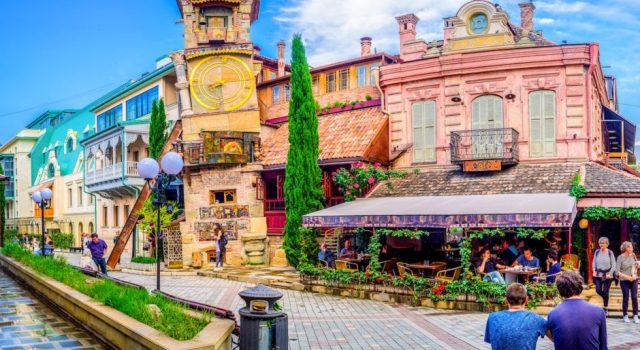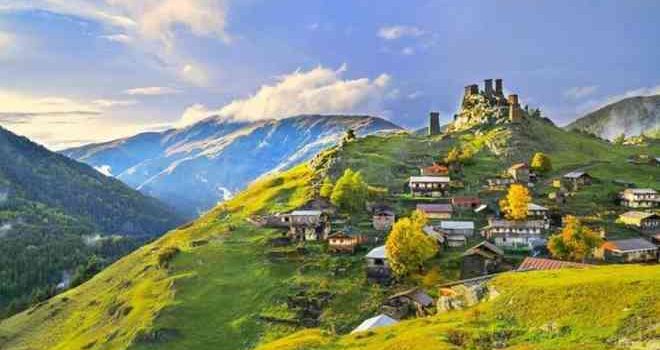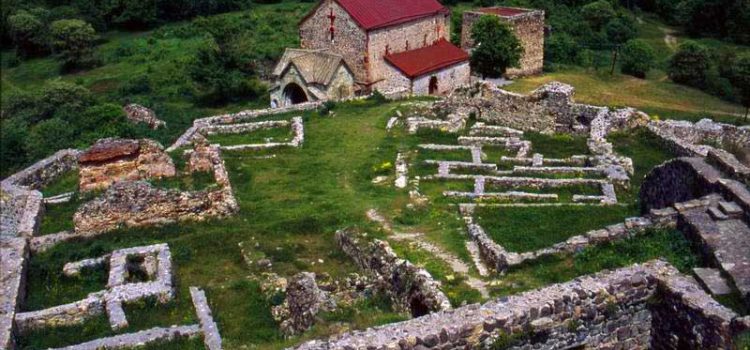Great News! Tbilisi is among 20 beautiful European cities with hardly any tourists
Tbilisi, Georgia
Orange, France
Norwich, England
Aarhus, Denmark
Antwerp, Belgium
The Hague, Netherlands
Sarajevo, Bosnia
Pristina, Kosovo
Malmo, Sweden
Aberdeen, Scotland
Bern, Switzerland
Wroclaw, Poland
Minsk, Belarus
Yerevan, Armenia
Cluj-Napoca, Romania
Debrecen, Hungary
Ankara, Turkey
Plovdiv, Bulgaria
Trondheim, Norway
Turin, Italy
Source: www.edition.cnn.com
The Daily Beast about Tusheti: The Last Wild Place in Europe
The Daily Beast has recently published an article about Tusheti, a historic region in northeast Georgia. Benjamin Kemper, the author of the article claims that the venue is the last wild place in Europe. He had visited Georgia many times but Tusheti had always been out of reach. The road to Tusheti is one of the most dangerous drives in the world.
“Even at the height of summer, it takes six hours of nauseous off-roading from the nearest town to reach the first Tushetian hamlets, and once you’ve arrived, you can all but forget creature comforts like cell service, internet, ATMs, and heat. But I was sold: The promise of an off-the-grid adventure in one of the last truly wild corners of Europe was too enticing to pass up,” reads the article about Tusheti.
The intact nature of Tusheti awaits visitors. The area is inhabited by “mountain goats, imperial eagles, brown bears, and, if you’re lucky, rare indigenous species like the Caucasian black grouse and East Caucasian tur, a goat-antelope with horns so enormous they look like they belong on a triceratops. There are even occasional, if uncorroborated, Persian leopard sightings.”
A herd of animals is moving forward on rocky slopes of the Great Caucasus Mountain and the scene can be observed from almost any place in Tusheti. The centuries-old towers will amaze visitors by their greatness and long-standing history. The towers used to be refuges protecting the locals from invaders or fatal avalanches.
“Medieval Tushetians did not mess around—they had their freedom to protect. From the earliest written records until well into to the 17th century, they enjoyed virtual autonomy as a tribal democracy. Although Tushetians coexisted fairly peacefully through the centuries with neighboring tribes such as the Chechens, Khevsurs, Lesghians, and Hinukhs, and traded often with them, they remained culturally distinct with their animist deities, transhumant lifestyle, fast-footed dances, and twangy dialect,” reads the article about the history of Tusheti.
Upon the hills, one can find a cluster of shrines called khatebi that is allegedly dedicated to Pagan-Christian demigods. Meanwhile, visiting a family in Tusheti will definitely involve tasting the traditional lamb-stuffed khinkali (Georgian dumpling).
Interested in the future of the region, Nugzar Idoidze, one of the locals of the village Omalo in Tusheti cheers the author up by saying that since Tushetians survived the Soviet pressure, they can survive anything.
The Daily Beast is an American news and opinion website focused on politics and pop culture.
source: www.Georgianjournal.ge
NY Times Includes Batumi in 52 Places to Go in 2019
The New York Times published a list of ‘52 Places to Go in 2019,’ which includes Georgia’s Black Sea coastal city Batumi.
The article reads that Tbilisi, Georgia’s capital, has been flooded with tourists over the past decade, adding Batumi, a “hushed seaside city where verdant mountains slope down to the Black Sea’s smooth stone beaches,” offers a different experience.
“Already a popular escape for Russians, Iranians, Turks and Israelis, the city is preparing itself for its inevitable discovery by the rest of the world: new hotels — including the Le Meridien Batumi and a Batumi installment of the design-centric boutique Rooms Hotel line — are rising, and a cable car will swing straight to the coast from the hilltop Batumi Botanical Garden,” the article reads.
Top 10 destinations of the list are:
- Puerto Rico
- Hampi
- Santa Barbara
- Panama
- Munich
- Eliat
- Setouchi Islands
- Aalborg
- The Azores
- Ontario Ice Caves
Source:Georgiatoday.ge
Meet your hominid ancestors in Georgia
Over 500 Paleolithic sites have been discovered in Georgia, which is considered a crossroad of cultures due to its location in the South Caucusus. Dmanisi, southeast of the capital Tbilisi, is considered one of the most significant sites.
“Exactly twenty five years ago we found a human jaw in Dmanisi – this was big sensation. It was impossible to imagine that you could have 1.8 million year-old fossils out of Africa. Since this discovery we have discovered another fossil. Now we have five skulls, four with jaws, different anatomical elements as well as animal bones and stone tools. Now, we could say that we have the best collection in the world of the early Homo out of Africa,” explains David Lordkipanidze, general director of the Georgian National Museum,
The Dmanisi skull is the most complete ancient hominid skull found to date. Known as Skull 5, it was discovered alongside the remains of four other early human ancestors, animal fossils and stone tools – all believed to be from the same time period – which makes the find truly unique.
“It’s the first evidence of humans moving out of Africa – very simple stone tools, brains literally a third of size of modern humans, but nonetheless they were able to exist in an environment with large saber-tooth cats and hyenas and other dangerous animals. It’s quite incredible,” says Nicholas Toth, co-director of the Stone Age Institute in Indiana.
The finding has forced scientists to rethink the story of early human evolution, as it could mean that rather than several Homo species, only a single-species – able to cope with a variety of ecosystems – emerged from the African continent.
‘Stone Age Georgia’ runs at the Georgian National Museum until September 2017.
Source: Euronews.com




